Red Necked Keelback – Venomous – Dangerous

(Page Updated: 1 May 2022)
Rhabdophis subminiatus (Red-Necked Keelback Snake)
Thai: (ngoo lay sab ko dang)
Length: Up to 100 cm (1 meters). I’ve never seen one close to 1 meter in length.
Range: Thailand and southeast Asia.
Notes: These snakes are commonly found near water, lakes, ponds, and in gardens. Recently a friend had one in his swimming pool in Krabi town, southern Thailand.
Active Time? Daylight hours. I’ve found them sleeping around 1 foot off the ground in bushes.
Food: Frogs, poisonous toads, and fish. I have not seen them eat anything but frogs and toads.
Defensive Behavior: Spread out the neck slightly to make themselves appear bigger. Not as dramatic as a cobra. Lift their head and neck off the ground 4-5 inches.
Some snakes of this species, and others in the genus Rhabdophis, have displayed a rather unique defensive behavior of exposing the back of their neck and secreting poison from their nuchal glands. This is not all that common unless very provoked.
One researcher, Kevin Messenger, claims that the R. subminiatus helleri he caught in Hong Kong actually sprayed a mist of the poison into the air from the back of the neck. Quite amazing, if true, right? Obviously more study is needed into the secret life of this fascinating snake. Other snakes in Rhabdophis genus with nuchal glands: R. nuchalis, R. tigrinus, R. nigrocinctus, and R. chrysargos (in Thailand).
Here is an image of the snake expressing poison from the nuchal glands.
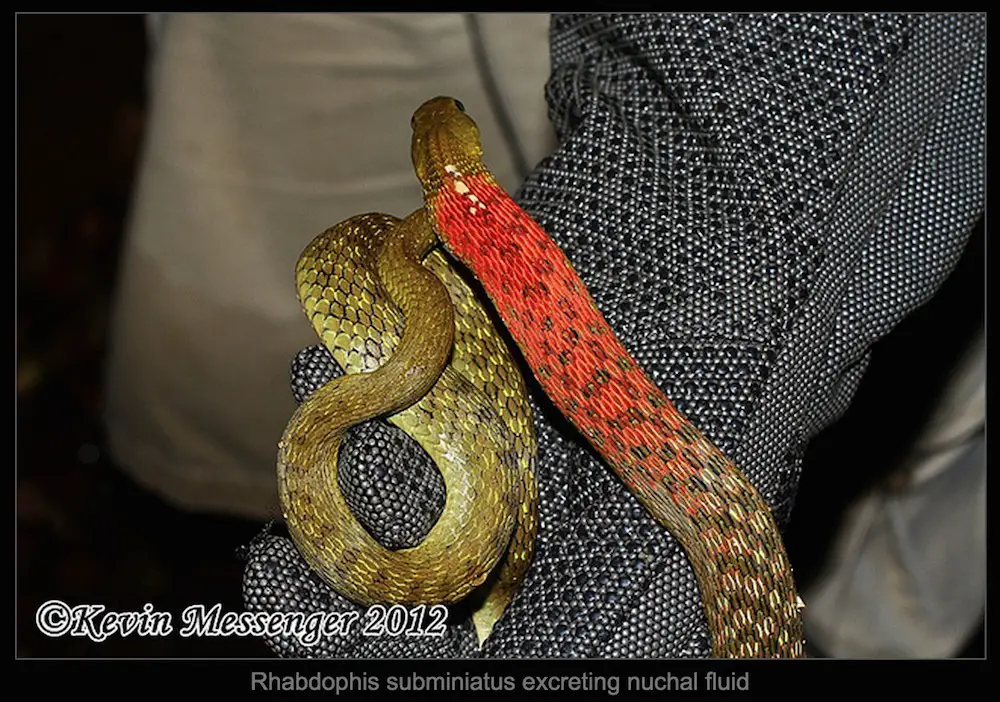
Here is the description in a scientific journal about Kevin’s encounter (link changed).
Venom Toxicity: LD50 is 1.29 mg/kg for intravenous injection (source). That is about the same rating as the very deadly “Banded Krait (Bungarus fasciatus)”. It was previously thought these snakes were harmless. Some kept them as pets and were bitten. In one case the snake was left to bite for two entire minutes before removing it from a finger.
Serious complications resulted requiring hospitalization and intensive care. Click for article. These snakes are rear-fanged and need to bite and hold on, or, repeatedly bite to have any effect on humans. Once they do either – there is the possibility of severe problems including renal failure and death. Recently a small boy of 12 years old was bitten by one he was keeping as a pet in Phuket, Thailand and he is currently being treated (11/5/10). Be very careful not be be bitten by these snakes. There is NO ANTIVENIN available yet for these snakes in Thailand. Scroll down for information about antivenin manufactured in Japan that may have some positive effect.
Another study in Japan ranked the venom as having an LD50 of 1.25 mg/kg for intravenous injection. (Japan Snake Institute, Hon-machi, Yabuzuka, Nitta-gun, Gunma-ken, Japan) V.1- 1969- Volume(issue)
In Japan they make limited amounts of antivenin, but it is specifically for their in-country use.
One WHO (World Health Organization) publication about the management of venomous snake bites in Southeast Asia mentions the antivenin for Rhabdophis tigrinus in Japan as having some effect on the venom of R. subminiatus. I am not sure if this is strictly for R. subminiatus found in Japan, or not. Worth a try though if you can get them to send you some antivenin. Otherwise, there is no other option – there is no monovalent antivenin specifically for R. subminiatus.
Japan Snake Institute
Nihon Hebizoku Gakujutsu Kenkyujo
3318 Yunoiri Yabuzuka
Yabuzukahonmachi Nittagun Gunmaken 379-2301
Tel 0277 785193 Fax 0277 785520
Snake-c@sunfield.ne.jp
www.sunfield.ne.jp/~snake-c/
Yamakagashi (Rhabdophis tigrinus) antivenom. Also effective against rednecked keelback (R. subminiatus venom)
Update: The 12 year old boy bitten by the Rhabdophis subminiatus was treated for 2 weeks of intensive care, and released. He was bitten multiple times, the 2nd bite lasting over 20 seconds.
Offspring: I had a juvenile red-necked keelback I’ve taken photos and videos of and released into the wild. I cannot find anything much about offspring. Recently (mid-June) I found a DOR juvenile very recently hatched, so like most snakes in Thailand the time around June is when they are hatching out. The coloration of the juvenile is quite different from adults as you can see in the photo and video below.
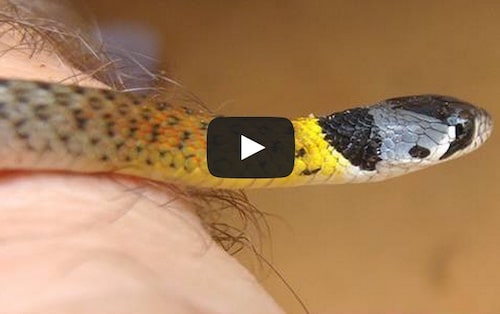
Notes: These snakes can inflict a deadly bite when they are allowed to bite for longer than a couple of seconds. I know personally of two instances where a child was bitten for well over 20 seconds, and a man was bitten for about a minute. Neither wanted to hurt the snake to remove it forcibly, and both spent over a week in intensive care, with the possibility of renal failure and death. Do not play with these snakes. If you have one, do not free-handle it. Treat it like you would a pit viper or a cobra. The LD50 on this snake for intravenous was stated to be 1.29 mg/kg. That is VERY venomous.
As a precaution, any snake in the Rhabdophis genus should be treated with extreme caution. In Thailand we also have the diurnal Rhabdophis nigrocinctus, and Rhabdophis chrysargos, both of which may be able to inflict a medically significant bite if given the opportunity.
Red-necked Keelback Scientific Classification
Kingdom: Animalia
Phylum: Chordata
Class: Reptilia
Order: Squamata
Suborder: Serpentes
Family: Colubridae
Genus: Rhabdophis
Species: Rhabdophis subminiatus

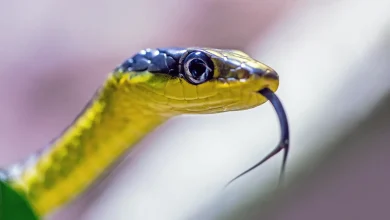
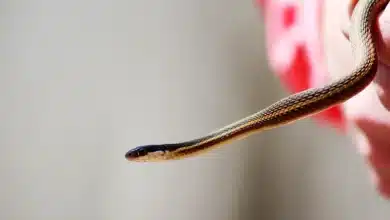
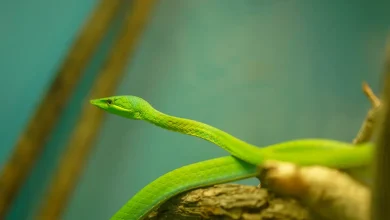
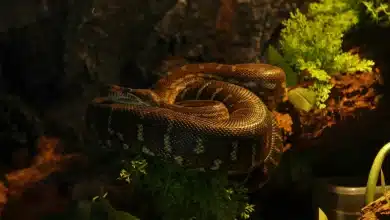
Just seen a Red Neck Keelback snake around Pai, trying to hide in some long grass tried to scare it away, but it seemed very friendly and wouldn’t go away, it eventualy disappeared into the undergrowth very beautiful snake though.
We just saw one too – a great specimen, no ticks or injuries to scales or tail. They are stunning. Dangerous though!
This little snake, the size of my index finger, bit my cat (somewhere in the mouth area) who was trying to tease it. The cat ran and so did the snake, very fast in the grass and hard to spot. My cat immediately foamed at the mouth which lasted for about 15 minutes. it then suffered spasm on its legs and it tumbled forward when it she was trying to walk. She’s two years old and weighs 4 kgs. I called my local vet and she ordered an injection at the nearby pet clinic. I administered the shot subcutaneously. The cat was fine after that.
We are in the mountainous area of Kampot.
That’s really interesting – thanks for the story. I have no idea what happened there. The snake is rear-fanged, is not built for envenoming, it needs to bite for either a prolonged time, or repeatedly to work venom into a bite. However, a bite by this snake on the mouth, introduces another variable… this snake has poison glands – Nuchal gland(s) on the top of the neck, and it’s possible your cat got some of the poison in its mouth I guess. No idea what the shot contained – if you can let me know, that would be great. Cheers!
Seems possible that when a Rhabdophis has been irritated/threatened by a potential predator (e.g. a cat) for a prolonged period of time, the defenses of the snake may include release of venom down the grooves of the rear teeth. If so, with sufficient time for some venom to spread within the mouth (do these snakes have saliva other than their venom?), if the predator then makes an move that triggers a defensive action (strike) by the snake, if some venom has been already released inside the snake’s mouth, any puncture or scratch made by the front teeth may be contaminated by a small amount of venom. Because of its significant toxicity, even tiny amounts of venom may logically cause (possibly non-lethal) symptoms. Without the “foreplay,” there would probably be no symptoms from a quick bite.
Makes sense James!
Hi..
I am from north eastern part of India and I must tell you that the red neck killer back snakes are available in my village . I don’t know about other parts of the state or country but in August September months it is seen the most.Even it entered into my room two months back. I searched and found that the snake was the red neck killer back snake.
This red neck killer back snakes;
1)can escape very fast
2) can climb in straight hills easily
3) can shrink its body to pass through a very small hole.
4) can’t tolerate the smell of kerosene.
I disagree for #2. Never saw one climb anything with speed, certainly not a vertical hill if that’s what you’re saying.
#4 – can anything tolerate kerosene?
Great site. Loads of these fellas around where I live in Laos. I usually see at least 2 or 3 every day. I often see them in low vegetation or among stacked timber with an unfortunate frog in their mouth – always hear the frog moaning first! Although I have seen a few moving very fast across the lawn, they mostly appear to be quite docile. I didn’t know they are so venomous – always thought they are only mildly so (enough to kill a frog or small rat). I often pick them up and take them away from the house or where the kids are playing but I’ll now be much more careful.
We found several of these snakes during construction of our zip line inside Angkor Wat Park . A few that we found were close to 2 meters so they can get large. Not aggressive but still handled with respect and we relocated to remote areas for release. Fangs on this snake are located in the back of the mouth.